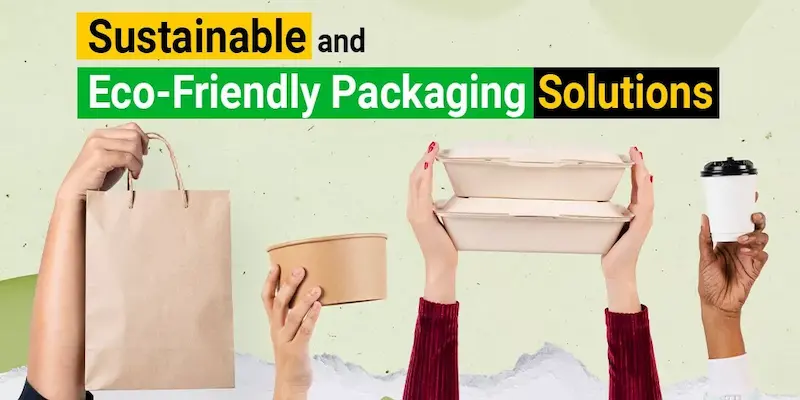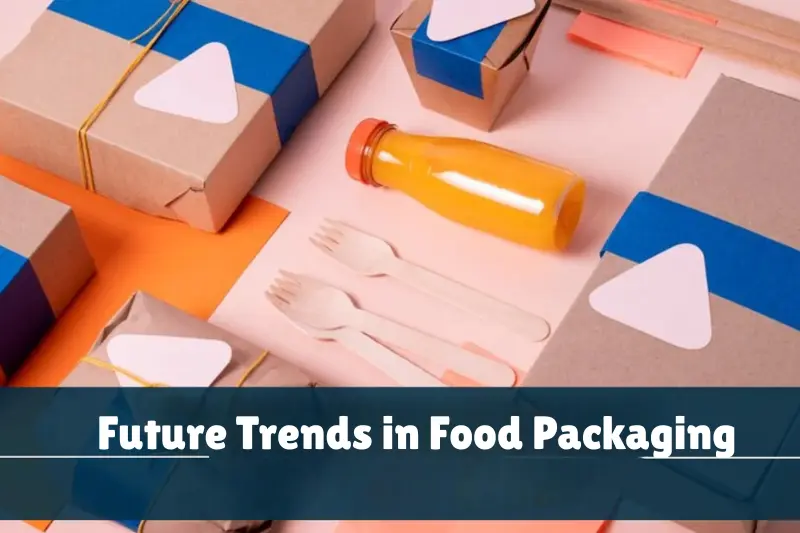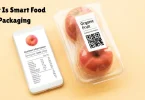The food packaging industry has witnessed a transformative shift over the past decade. Today, the best packaging innovations in the food industry extend beyond simply wrapping and storing food—they are designed to preserve quality, enhance safety, improve convenience, support sustainability, and enrich the consumer experience.
With consumers becoming more health-conscious and environmentally aware, companies are investing heavily in innovative packaging materials, smart technologies, and unique designs.
This comprehensive guide explores the best packaging innovations in the food industry that are shaping the present and future of food packaging.
1. Sustainable and Eco-Friendly Packaging

Sustainability has emerged as one of the most critical factors influencing packaging design. The best packaging innovations in the food industry now focus on reducing environmental impact through biodegradable, compostable, and recyclable materials.
Mushroom-Based Packaging
- Description: Made from mycelium, the root structure of mushrooms, which grows quickly and naturally.
- Benefits: Fully biodegradable, compostable, renewable, and lightweight while providing strong cushioning for fragile food items.
- Example: Ecovative produces mushroom-based trays and packaging as an alternative to polystyrene foam used for eggs, produce, and other delicate items.
Seaweed-Based Packaging
- Description: Derived from seaweed or algae extracts, forming films, pouches, or sheets.
- Benefits: Edible or biodegradable, reduces reliance on fossil-fuel-based plastics, and uses minimal water and land resources.
- Example: Notpla produces sauce pouches and wrappers that are fully compostable and even edible.
Agricultural Waste-Based Packaging
- Description: Uses byproducts such as chicken eggshells, rice husks, or even treated sewage sludge to form packaging materials.
- Benefits: Reduces agricultural waste, is compostable, and provides durable, water-resistant packaging options.
- Example: The Indian Institute of Technology Hyderabad has developed biodegradable films using eggshells and sewage sludge, combining sustainability with material strength.
2. Smart and Active Packaging
The best packaging innovations in the food industry incorporate technology to improve food safety, freshness, and consumer interaction.
Intelligent Sensors
- Description: Sensors integrated into packaging that monitor temperature, humidity, and gas levels inside.
- Benefits: Provides real-time indicators of food quality, alerts consumers to spoilage, and extends shelf life.
- Example: Meat or dairy packaging featuring color-changing indicators to signal freshness.
Interactive Packaging
- Description: Packaging embedded with QR codes, NFC chips, or augmented reality features.
- Benefits: Engages consumers, delivers recipes, nutritional facts, and promotional content, and builds brand loyalty.
- Example: Coca-Cola and Nestlé have introduced AR-enabled packaging that provides interactive digital experiences for consumers.
3. Convenient and Ready-to-Use Packaging
Convenience is a priority for modern consumers. The best packaging innovations in the food industry focus on making food easy to use, store, and consume, particularly for on-the-go lifestyles.
Microwaveable Packaging
- Description: Containers and trays that are safe for microwave use, often featuring vented lids and heat-resistant materials.
- Benefits: Eliminates the need for separate cooking vessels, reduces preparation time, and maintains food quality during reheating.
- Example: Ready-to-eat meals packaged in microwave-safe trays for direct heating.
Single-Serve and Portion-Controlled Packaging
- Description: Individually packaged servings for snacks, beverages, or meals.
- Benefits: Reduces food waste, simplifies meal planning, and enhances convenience for travel or work.
4. Personalized and Transparent Packaging
Personalization and transparency are increasingly popular trends in the best packaging innovations in the food industry, helping brands connect with consumers on a deeper level.
Customizable Designs
- Description: Labels and packaging that can be personalized with names, messages, or graphics.
- Benefits: Creates an emotional connection with consumers, increases product giftability, and enhances brand recognition.
Transparent Packaging
- Description: Clear or windowed materials that display the food inside.
- Benefits: Allows consumers to assess freshness and quality, builds trust, and improves product visibility on shelves.
- Example: Organic produce and premium brands often use transparent pouches or cartons to highlight product quality.
You may also like to read this:
Top Future Food Innovations To Watch For Smarter Eating
What Is Smart Food Packaging? Everything You Should Know
How Eco-Friendly Packaging Works: Complete Guide For 2025
10 Types of Packaging Used In Processed Foods Explained
Why Packaging Affects Food Quality: Complete Guide
5. Innovative Formats and Designs
Packaging design is evolving to improve usability, functionality, and visual appeal. The best packaging innovations in the food industry focus on multi-functionality and consumer-friendly formats.
Stackable and Modular Boxes
- Description: Packaging designed to be stacked efficiently during transport or storage.
- Benefits: Saves space, reduces need for additional packaging, and supports convenient retail displays.
- Example: Stackable meal boxes with carrying straps reduce the use of plastic bags and improve portability.
Expandable Containers
- Description: Packaging that adjusts in size to accommodate different portion quantities.
- Benefits: Reduces food waste, increases consumer flexibility, and enhances product convenience.
Multi-Functional Packaging
- Description: Packaging that doubles as plates, bowls, or serving dishes.
- Benefits: Minimizes the need for additional materials, promotes eco-friendly consumption, and provides added convenience.
6. Recyclable and Compostable Solutions
Eco-conscious consumers drive demand for packaging that minimizes environmental impact. The best packaging innovations in the food industry focus on fully recyclable or compostable options.
- Recyclable Packaging: Includes caps, wrappers, and cartons designed for easy recycling.
- Compostable Packaging: Biodegradable trays, bags, and films that break down naturally.
- Example: Kraft Heinz introduced recyclable ketchup caps, addressing a long-standing plastic waste issue.
7. Advanced Food Preservation Techniques
The best packaging innovations in the food industry are not limited to materials—they also focus on maintaining freshness and extending shelf life.
Modified Atmosphere Packaging (MAP)
- Description: Replaces the air inside packaging with a controlled gas mixture, typically reducing oxygen and increasing nitrogen or CO₂.
- Benefits: Slows microbial growth, preserves taste, texture, and nutritional value, and extends shelf life.
- Applications: Fresh-cut produce, meats, and ready-to-eat meals.
High-Pressure Processing (HPP)
- Description: Uses extreme pressure to eliminate harmful bacteria without applying heat.
- Benefits: Maintains flavor, color, and nutrients while providing safe, long-lasting food.
- Applications: Juices, deli meats, guacamole, and other perishable products.
8. Future Trends in Food Packaging

The best packaging innovations in the food industry are heading toward smarter, more sustainable, and digitally integrated solutions:
- Edible Packaging: Wrappers and films made from rice paper, seaweed, or starch-based materials.
- AI-Driven Packaging Design: Uses artificial intelligence to optimize material use, reduce costs, and minimize waste.
- Circular Packaging: Fully reusable, recyclable, or compostable packaging systems.
- Digital Integration: AR-enabled packages, apps, or smart tags to enhance engagement, provide information, and improve user experience.
9. Edible and Functional Packaging
Edible packaging is one of the most innovative trends within the best packaging innovations in the food industry. These packaging solutions are designed to reduce waste while adding functional value.
Description
- Made from rice paper, seaweed, starches, or protein-based films.
- Sometimes infused with flavors, nutrients, or probiotics.
Benefits
- Eliminates plastic waste entirely for single-use packaging.
- Can provide additional nutrients or flavors to complement the food.
- Enhances sustainability and promotes an eco-friendly image.
Example
- Loliware produces seaweed-based edible cups and straws that are fully biodegradable and safe for consumption.
10. Temperature-Controlled Packaging
Maintaining the correct temperature is critical for perishable and sensitive food products. Temperature-controlled packaging is increasingly used in the best packaging innovations in the food industry.
Description
- Packages equipped with thermal insulation, phase-change materials, or smart temperature indicators.
- Can include active cooling or heating mechanisms.
Benefits
- Ensures freshness of frozen, chilled, or heat-sensitive foods during transport.
- Reduces spoilage and enhances consumer confidence.
- Critical for e-commerce food deliveries and long-distance shipping.
Example
- DHL and other logistics companies use smart insulated boxes with temperature-monitoring sensors for seafood, dairy, and pharmaceuticals.
11. Anti-Microbial and Protective Coatings
Food safety is a major concern, and protective packaging coatings are among the best packaging innovations in the food industry.
Description
- Packaging coated with natural or synthetic antimicrobial agents.
- Reduces microbial growth on the surface of food or the packaging itself.
Benefits
- Extends shelf life without chemical preservatives.
- Maintains food quality and reduces risk of contamination.
- Can be combined with biodegradable materials for sustainability.
Example
- Certain meat trays are coated with antimicrobial films derived from chitosan, a natural compound found in shellfish, to inhibit bacterial growth.
12. Minimalist and Zero-Waste Packaging
Modern consumers increasingly prefer simpler, environmentally friendly packaging. Minimalist designs are part of the best packaging innovations in the food industry.
Description
- Reduces packaging layers, eliminates unnecessary plastics, and uses recyclable or compostable materials.
- Emphasizes simplicity and functional aesthetics.
Benefits
- Reduces production costs and carbon footprint.
- Communicates eco-conscious brand values to consumers.
- Enhances shelf appeal with clean, visually attractive designs.
Example
- Brands like Patagonia Provisions and Loop offer reusable and minimal packaging systems for dry foods and pantry items.
13. Intelligent Supply Chain Integration
The best packaging innovations in the food industry now connect packaging with the supply chain using IoT and data analytics.
Description
- Packages embedded with RFID, QR codes, or NFC chips.
- Track product location, temperature, and handling throughout the supply chain.
Benefits
- Reduces spoilage and loss during transport.
- Provides valuable data for manufacturers and retailers.
- Enables consumers to trace product origin, improving transparency.
Example
- IBM Food Trust and Walmart use blockchain-integrated packaging to trace fresh produce from farm to store.
14. Consumer-Centric Designs
The modern consumer expects packaging that is practical, easy to open, resealable, and visually appealing.
Description
- Resealable pouches, pour-friendly spouts, and easy-grip containers.
- Includes design elements for visually impaired consumers or those with limited dexterity.
Benefits
- Enhances convenience and usability.
- Reduces food waste through resealable and portion-controlled designs.
- Builds positive brand perception through thoughtful design.
Example
- Stand-up resealable pouches for nuts, cereals, or snacks allow repeated use without compromising freshness.
Conclusion
The best packaging innovations in the food industry are more than just containers—they represent a convergence of technology, sustainability, design, and consumer convenience. From smart sensors and edible films to temperature-controlled packaging and AI-optimized designs, innovations are transforming the way food is stored, transported, and experienced.
Companies that adopt these innovations not only enhance product safety and freshness but also build stronger consumer trust, reduce environmental impact, and position themselves as industry leaders in sustainability.
As technology continues to advance and consumer preferences evolve, the future of food packaging will likely be dominated by smart, eco-friendly, interactive, and multifunctional solutions—making the packaging itself a key part of the food experience rather than just a protective barrier.
FAQs
1. What are the best packaging innovations in the food industry?
The best packaging innovations in the food industry include sustainable materials like mushroom- or seaweed-based packaging, smart sensors for freshness, microwaveable and single-serve containers, and interactive or personalized designs. These innovations enhance food safety, convenience, and sustainability.
2. Why is sustainable packaging important in the food industry?
Sustainable packaging reduces environmental impact, lowers plastic waste, and supports eco-friendly consumer choices. The best packaging innovations in the food industry focus on biodegradable, compostable, and recyclable materials to achieve these goals.
3. How does smart packaging work?
Smart packaging uses technologies such as temperature sensors, spoilage indicators, QR codes, or NFC chips to monitor food quality, alert consumers, and provide interactive experiences. It is one of the most advanced best packaging innovations in the food industry.
4. What are some examples of eco-friendly food packaging materials?
Popular eco-friendly materials include mushroom-based trays, seaweed films, rice husk containers, and biodegradable plastics. These materials are widely recognized as part of the best packaging innovations in the food industry.
5. How does packaging improve food preservation?
Advanced techniques like Modified Atmosphere Packaging (MAP) and High-Pressure Processing (HPP) help maintain freshness, prevent spoilage, and extend shelf life. Combining these methods with innovative packaging materials is a major trend in the best packaging innovations in the food industry.




